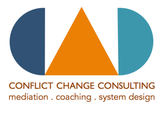Mediation and litigation are like apples and oranges. Mediation is party focused whereas litigation is focused on procedure. Mediation is an informal process where the parties decide on the solution to their dispute with the assistance of a neutral and independent third party. Mediation is collaborative and litigation is adversarial.
Litigation also involves a neutral and independent third party, the judge. However, unlike a mediator, the judge is not there to solicit the solution from the parties, instead the judge will hear the evidence presented by the parties and hand down a judgment.
The judge is charged with administering the law and thus will be required to ensure that procedural rules are strictly followed and that the judgment is based on her determination as to fact and law. In litigation the parties have given up their right to determine how the process will occur and what the result will be.
Although almost all parties in litigation feel absolute confidence in the rightness of their position, at least half of these people are wrong. Litigation leads to a winner and a loser. In mediation, the settlement agreement may not reflect 100% of what a party wants but it is likely to represent a collaboration that they can live with – and the best settlement agreements give parties solutions they could not have created without mediation.
As compared to mediation, litigation is a long process due to the many required procedural steps. Parties are required to act as adversaries where they present their best case to the judge in order to convince her of the rightness of their assertions.

